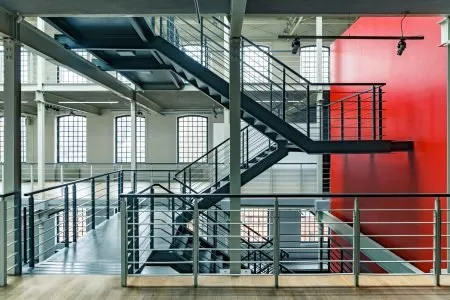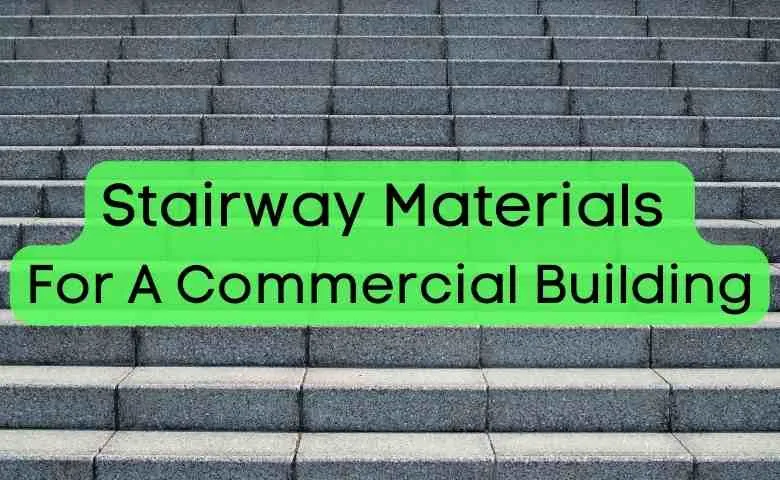Last Updated on April 4, 2024 by Admin
Your choice of commercial stairway material can determine how safe it is to your employees, customers, and aged visitors, of which about 11 million in the U.S. have difficulty walking or climbing stairs. Besides, good stairway materials can improve your commercial space’s aesthetic appeal while ensuring you comply with building code specifications.
ConstructionCareerHub App is LIVE — built ONLY for construction careers. Don’t apply with a weak resume.
Get ATS-ready Resume Lab + Interview Copilot + Campus Placement Prep (resume screening, skill gaps, interview readiness) — in minutes & Other advanced features.
Explore Smarter Construction Career Tools →Quick check. Big impact. Start now.
That said, it helps to know how to select your commercial building’s stairway material. This article explores factors to consider when choosing which material to opt for. Read on.
Table of Contents
Safety considerations
It’s best to consider safety first when selecting stairway materials for your commercial building. Ideally, you want material that offers excellent traction to prevent slips, falls, and possible workplace injuries. Commercial concrete stairs, for instance, can be much safer since they provide suitable friction to guarantee safety from slips and injuries, depending on your preferred finishing. While at it, it’s also prudent to consider your handrails options, stair tread width, depth, and height to boost the safety of your building’s stairs.
Prioritizing safety can have many benefits beyond just preventing injuries. It can also improve employee morale and productivity, reduce insurance costs, and create a positive reputation for your business.
Aesthetics and style
Commercial stairways not only serve a practical purpose but can also enhance the aesthetic appeal of your building. So, when choosing stairway materials, it’s important to consider both functionality and style.
Generally, you want your choice of stairway material to complement your building’s design and reflect elegance and professionalism. So, consider the overall style of your building and choose materials that match or enhance it. For example, metal, wood, or glass materials can offer a contemporary design and appeal, while brick staircases can be perfect for classic and vintage décor.

Durability and maintenance
When selecting stairway materials for commercial buildings, choosing durability is key to getting the best value for your money. After all, stairways tend to be the most heavily trafficked areas, and wear and tear can quickly take a toll. For this reason, many people opt for pure or reinforced concrete, which is highly resistant to damage and can last for years.
Concrete is not only durable but also easy to maintain, making it a popular choice for commercial spaces. However, if you’re looking for a more aesthetic option, materials like wood and glass can still be considered. Just keep in mind that these materials may require more maintenance to keep them looking their best. Whatever material you choose, it’s important to keep it well-maintained to ensure its longevity.
Cost considerations
Cost is a key factor to consider when choosing material for stairways in your commercial building. After all, you want to ensure you make a sound investment.
It’s also worth noting that while some materials may be cheaper upfront, they may not be the most cost-effective option in the long run. For instance, wood and glass can be seemingly more affordable than concrete, but they hardly last as long as concrete and may not offer value for your investment.
By choosing a material that is generally prone to wear and tear, you may end up having to replace or repair the stairway more frequently, which can be costly and time-consuming. On the other hand, if you choose a durable material that can withstand heavy traffic and requires minimal maintenance, you could save money in the long run. That said, consider the initial and long-term costs of your chosen materials and ensure that it’s economical.
Building code compliance
Compliance with building codes and regulations is crucial regarding stairway materials, as it can impact safety and liability issues. As such, before selecting materials for your building, check local building codes and applicable regulations to ensure the materials you choose meet safety standards and requirements.
In some cases, compliance with building codes may require more than selecting the appropriate materials. For instance, local codes may also specify minimum stairway riser and tread dimensions and handrail height and placement requirements. They may also require that the stairway design be certified by a professional engineer before construction can begin. This can involve preparing detailed plans and calculations to demonstrate that the design meets code requirements and can safely support the expected loads.
Therefore, working with professionals knowledgeable about local building codes and regulations is critical when designing and constructing stairways. By doing so, you can ensure that the materials you choose meet safety standards and requirements and that your stairway is safe and legally compliant.

Conclusion
Selecting the appropriate materials for your commercial building’s stairway can offer a range of benefits, from improved aesthetics and durability to enhanced safety and compliance with building codes. By understanding how to select and evaluate materials based on factors such as cost, performance, and code requirements, you can make an informed decision that meets your needs and budget.
In addition to selecting the right material, having it installed by a reputable and experienced contractor is equally important. It’s worth noting that the quality of the installation can significantly impact the longevity and performance of the staircase, and even the best quality materials can fail if installed improperly. Therefore, choosing a reliable and skilled contractor is crucial to ensuring that your stairway meets your expectations and stands the test of time.


